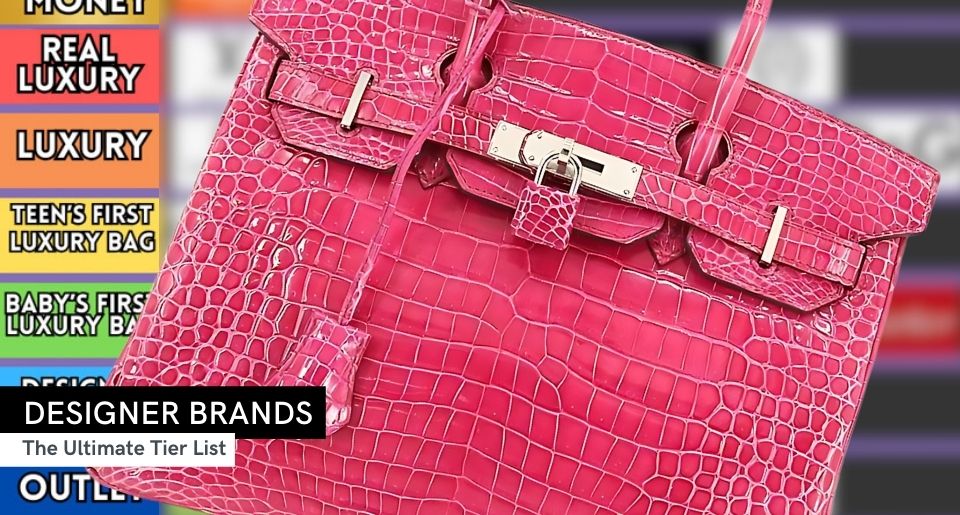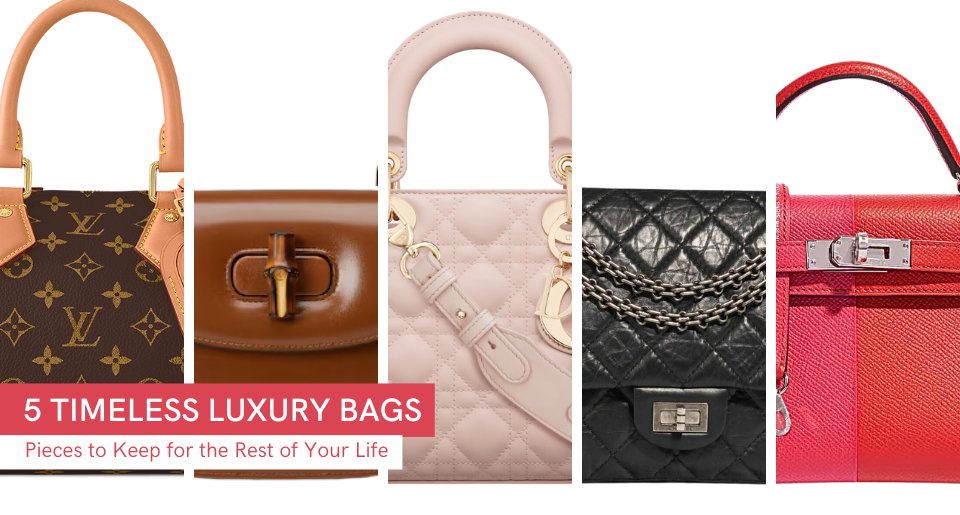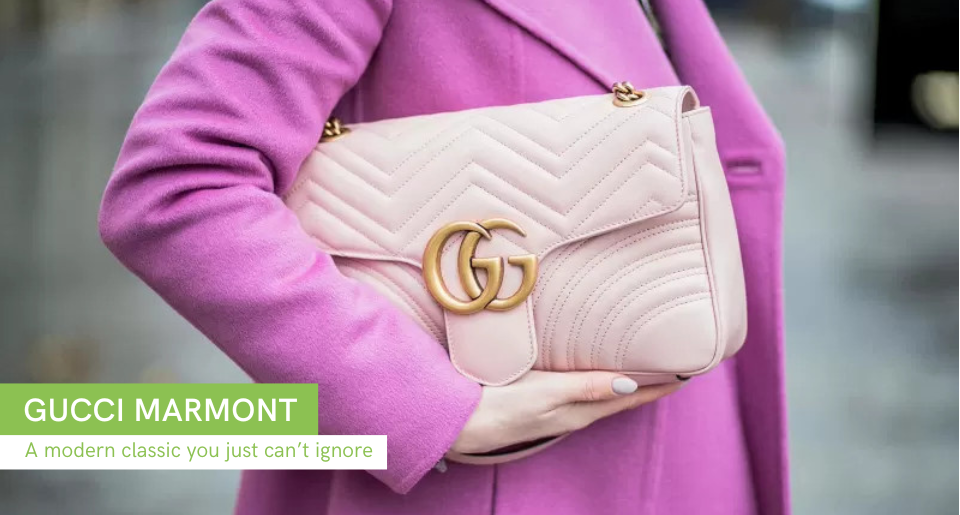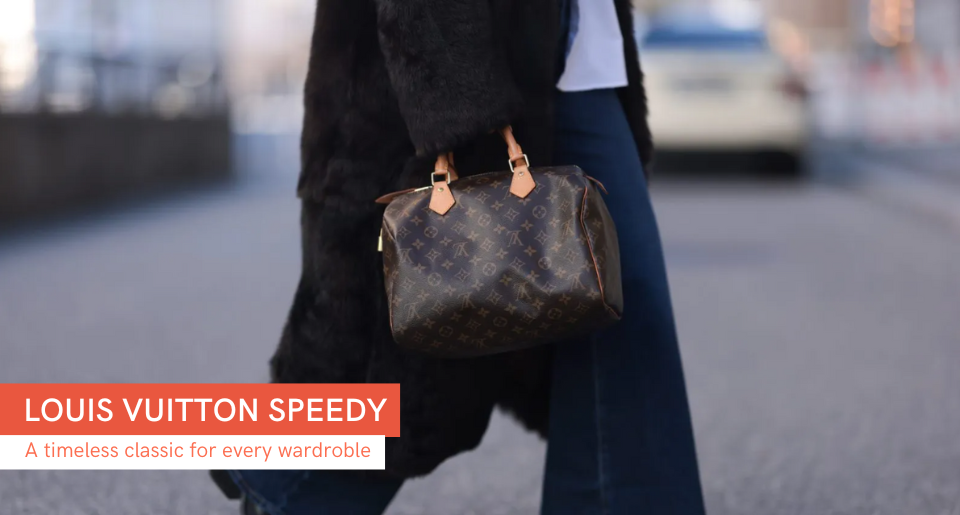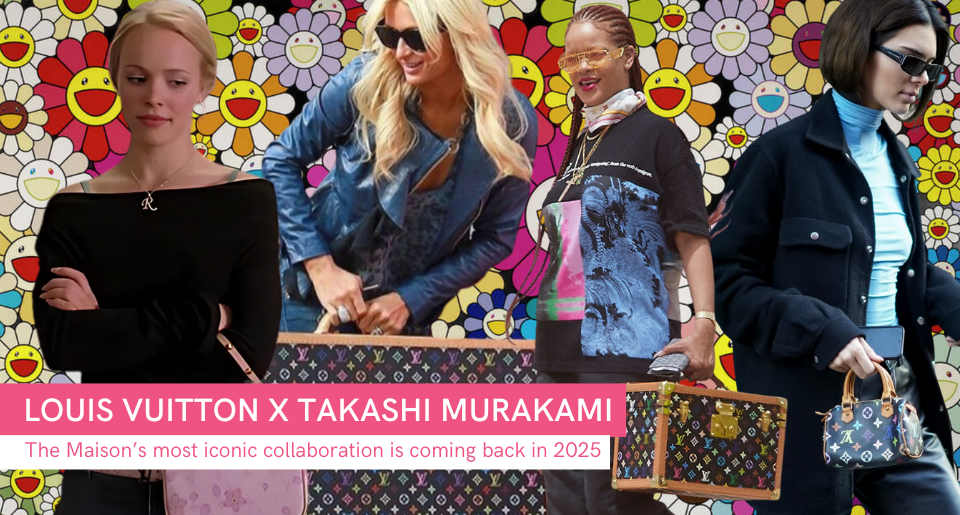Introduction: Why Luxury Brands Are Valued Differently
To us mere mortals, who do not have the means to shop at Louis Vuitton as if it was the local convenience store, most luxury brands are seen as unattainable or at best, hardly accessible. However if you’re reading here on ZenPlus you are likely well aware of how much more inviting the second hand luxury market in Japan is, and have hopefully explored it.
When you dive into the preloved world, you will notice something the regular luxury shopper is also well aware of, the hierarchy of luxury brands. For some reason, certain brands like Chanel, Hermes or Van Cleef & Arpels hold an absorbent resale value compared to the alternatives.
Why is this?
Well, there’s the simple answer of how these brands have higher retail prices than most. But this wouldn't explain everything. Brands like Bottega Veneta for example have equally high retail prices, yet you see their resale value plummet as soon as they hit the second hand market.
This is largely due to the fact that a brand's status in society is a lot more than a price tag. Factors like accessibility, trends, history, and much more, all determine the resale value, a far more democratic way of determining price than the market, which is heavily dominated by Kering and LVMH, the conglomerates which own most of the popular brands.
This topic may seem abstract, but I’m confident you see this phenomenon on a daily basis. To make it more tangible, let us visualize it.
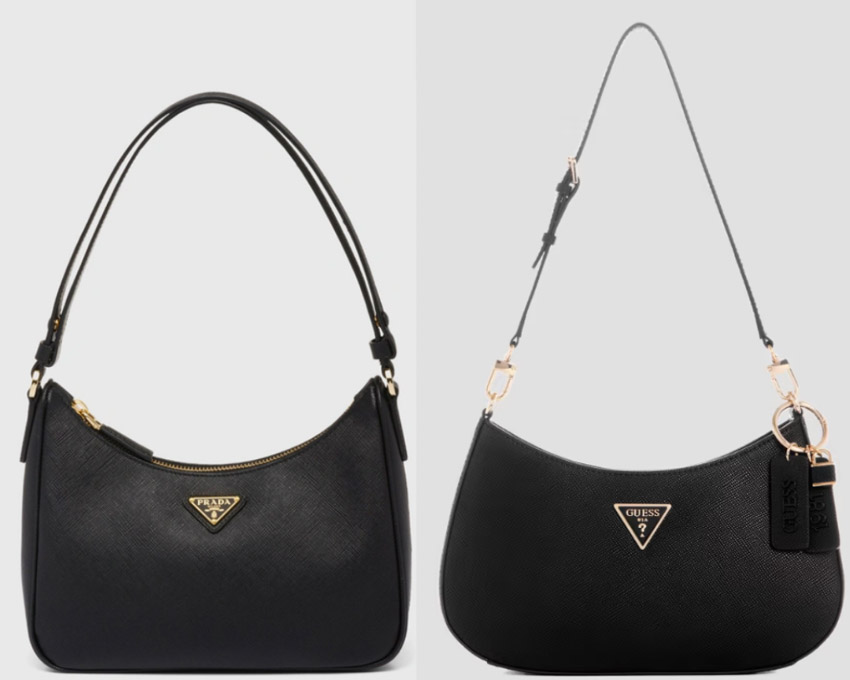
Same, same but different
Both are shoulder bags, both are black, both sporting leather accents and a triangular metal plaque. However, one of them turns more heads than the other.
Prada has of course a much longer history and prestige than Guess. Prada, being based out of Milano, stems from the early 1900’s and has always been centered around Italian fashion, which in some ways is a brand of itself, considering Italy’s long history as a birthplace of fashion in the renaissance. Guess however, was incepted by 4 French brothers making jeans, and moved to America because they liked Californian girls…
While a good American business story, it does not hold the storied pedigree that the old Italian fashion houses do. This reflects in the price tag too, you’ll see the “Guess Noelle” cost $98 USD retail, while the “Prada Saffiano Mini bag” sports a whopping $2,000 USD+, over 20x more.
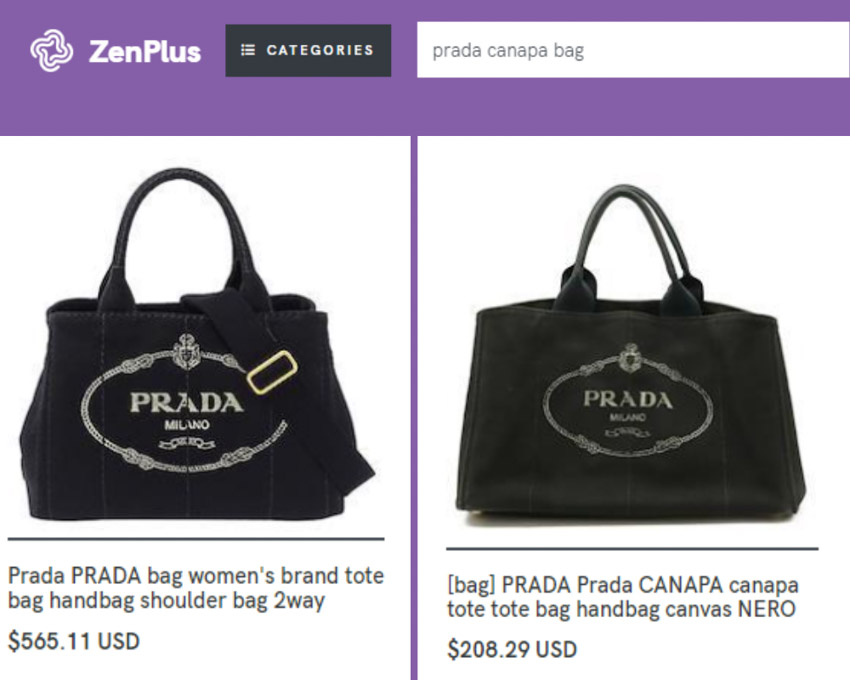
Prada Canapa $500+ on ZenPlus | Prada Canapa $200 on ZenPlus
Most recent Prada Canapa available on ZenPlus
If we move our eye to the resale market, you’ll see the Guess bags in the $20-30 USD category, while Prada holds its value quite well. As you see from the example here, how well the value holds largely depends on age, color and condition.
This leads me into my next point. While Prada has a historical pedigree connected not only to their brand, but also heritage, they’ve still launched some lines that just didn’t stand the test of time. Items like these can be found on the resale market all the way down in the $150 USD price category. So iconicness is not just in brand alone, but is also subdivided by individual products.
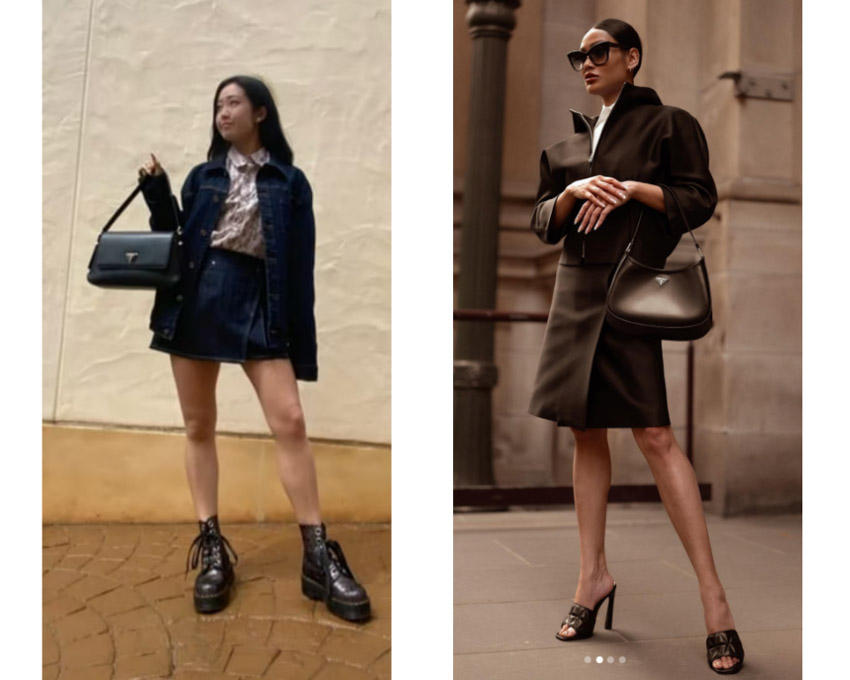
Buying Into It - Selling The Idea of Luxury
At this point there’s two types of people;
Those who wonder why anyone would buy a Guess bag if it’s simply a “dupe” (short for duplicate) of more famous items!
And those who wonder why you’d pay 20x more for an almost identical bag?!
The answer lies in the question itself. Both brands serve different audiences.
Prada knows that in order to appeal to high fashion enthusiasts, selling a bag is not enough, they need to sell an idea. While this sounds lofty and aristocratic, every brand does this, from D&G to Dollar General.
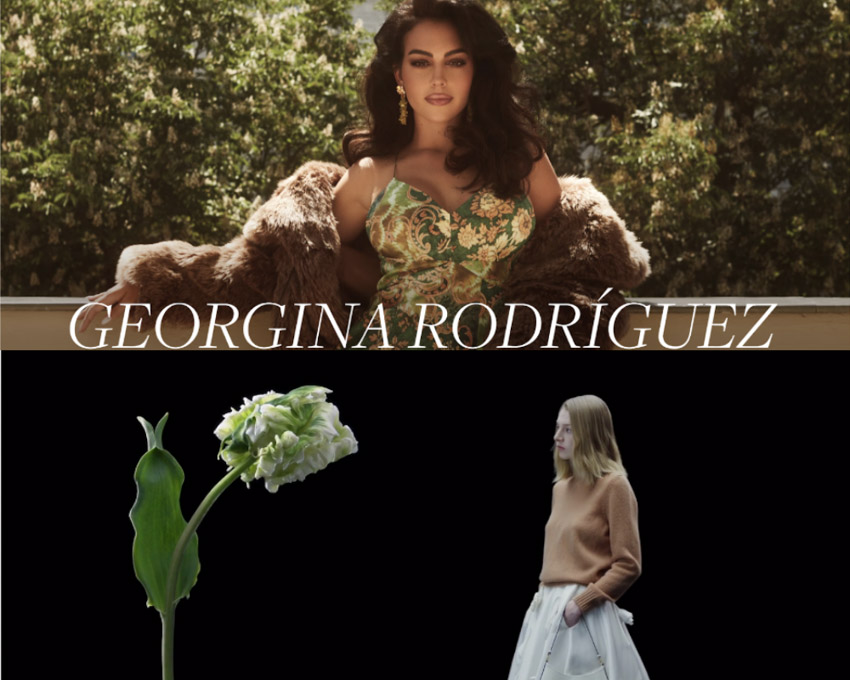
Prada & Guess websites
This becomes very clear if we compare Prada & Guess’ websites.
Confident and sexy, with a piercing look, Spanish-Argentinian influencer and model Georgina Rodriguez spreads herself across Guess’ front page. Dressed in a floral dress and what looks like a fur coat, she’s fronting the life as world famous Soccer star Cristiano Ronaldo’s wife, aka, the modern equivalent of South European Royalty or, “classical elegance” as Guess likes to call it.
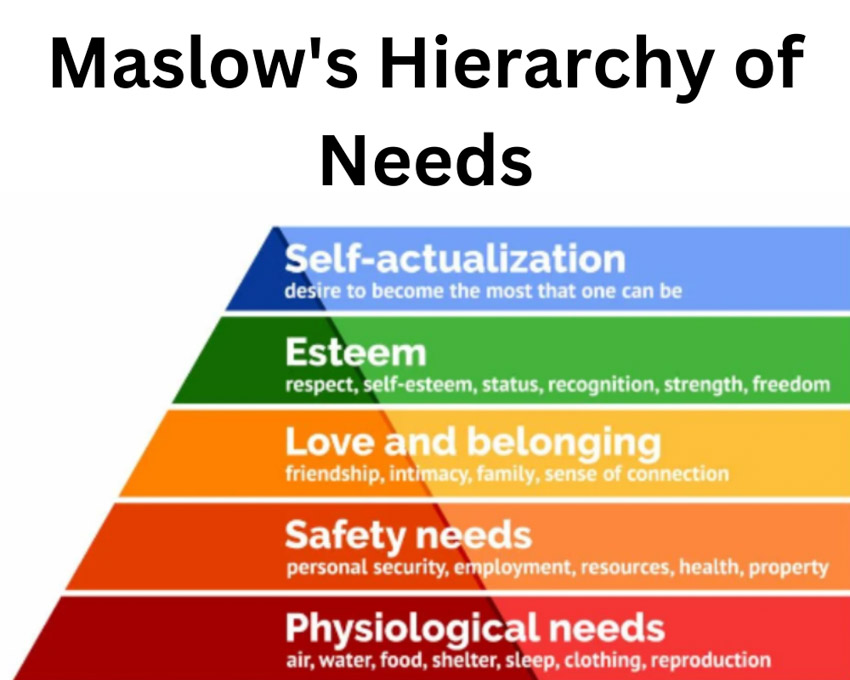
Maslow's pyramid
Prada on the other hand, gives us a black backdrop with various actors modeling their fits, in a trance like staredown with human size flowers. To the untrained eye, this may look like elitist nonsense, but the truth is, both Guess and Prada use sex as a selling point. As a flower dresses up with petals to court insects to spread their seed, the actors are paralleled, their petals their Prada, their sensuality in their expression.
This extreme contrast in outcome from the same core concept is a result of selling different ideas, belonging in different categories of Maslow's Hierarchy of needs.
Guess sells Status, Prada sells Self Realization, but ultimately us customers are only human, and sex sells.
Hierarchy of Luxury Brands
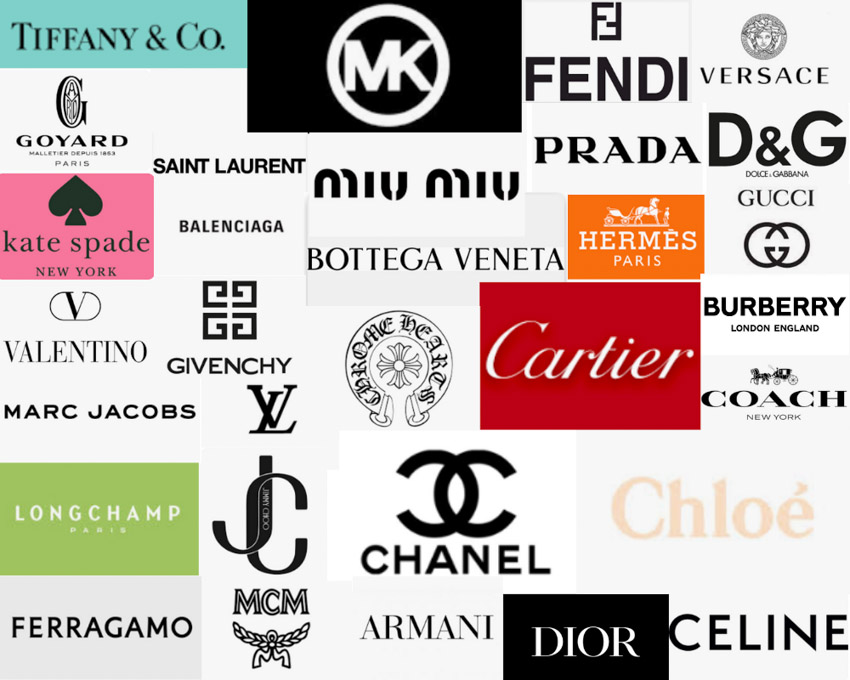
Much like Maslow's Pyramid is a hierarchy ruled by different categories, so can we divide the various brands into different categories of luxury. To illustrate this, I’ve created a tier list of the top luxury brands. Do take this list with a grain of salt. As mentioned above, even if a brand is of high notoriety, the individual products are themselves judged for their iconicness. As my expertise lies primarily in the handbag and leather goods side of luxury, I’ve decided to judge them exclusively on these grounds, hence why you’ll see Cartier quite low, even if they belong in the top if judged by their jewelry.
The list is divided in tiers S, A, B, C, D, E, F described by what level of luxury they inhibit. S tier = Old Money & F tier = Outlet. Let’s begin:
Luxury Brand Tier List
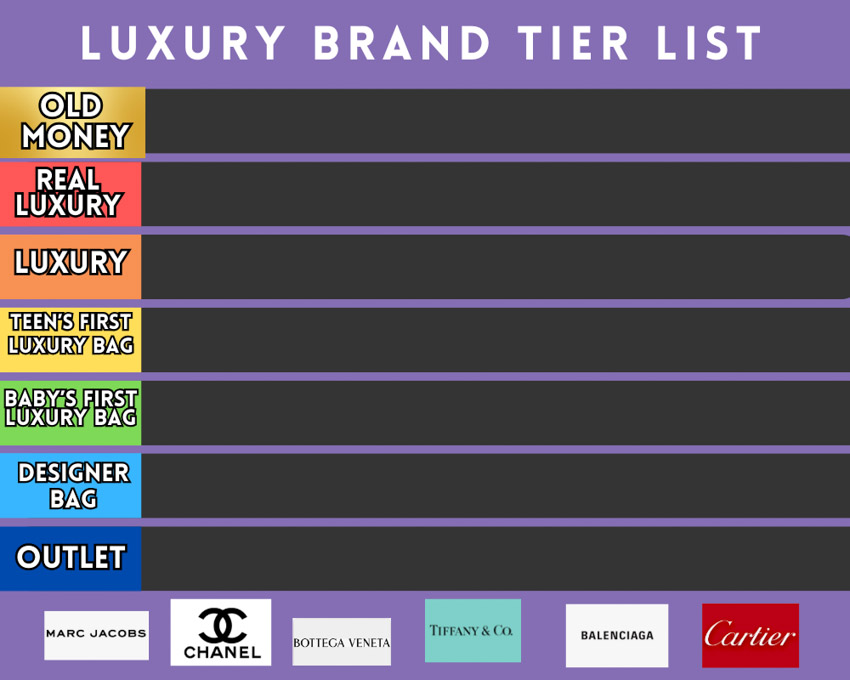
Tier list 1
Chanel: S - Tier
The brand that carries the name that would invent modern femme fashion as we know it! With an unmatched historic pedigree, having been consistent with their brand image since its inception, and has kept their value high all the way, Chanel belongs in the S Tier of this list. While they’ve seen some backlash due to recent revelations of Chanel’s questionable activities during the 1940’s, it has not been enough to really affect the public perception of this fashion behemoth.
Marc Jacobs: E - Tier
One of Louis Vuittons long sitting creative directors making his own brand after LV deemed his time to be over. Beloved for his designs at LV his fans stayed loyal to the brand,not the designer, thus Mr. Jacobs decided to focus on a younger audience with less capital. Still, with Gen X & Millennials admiring his LV work, it created the presidency to buy their kids the trendy Snapshot bag which holds a resale value close to retail. This bag alone places MJ above the lowest tier.
Bottega Veneta: C - Tier
Nobody can speak against the quality of the materials or the craftsmanship required to craft the now iconic intrecciato leather that Bottega Veneta is known for, truly, it reflects in their retail pricing. Yet you still find their goods heavily discounted second hand. True fans pay top dollars, there just isn’t enough of them vs the non-iconic products to keep up the scarcity. However, modern pieces have steadily reversed this trend, landing them comfortably in the luxury category.
Cartier: D - Tier
Cartier is one of the strongest brands, if you look at their jewelry. If you judge them for their leather goods however, you see 4000$ retail, and 80$ on the resale market. While their inherent strength in Jewelry cannot be ignored; that price drop Cartier, not cute.
Tiffany & Co: D - Tier
Tiffany is another brand that would make it far higher on the list if we considered what they’re actually making. Tiffany sells status in silver, and self realization in Gold. However they’ve learned the hard way that just because something is shiny, does not make it expensive in the eyes of the consumer. Their shiny and blue leather offerings aren’t retailing as high as Cartier, and thus puts them on the low middle of the list.
Balenciaga: B - Tier
Ballin’ in balenciaga got a bit of a different ring to it after the scandal in 2022 centered around an ad campaign that eluded to child abuse. While this conversation has largely died down, it did pause Balenciagas perceived value for a solid year and took a lot of the thunder their Gucci Collaboration would have had. Still, that’s a collab with Gucci! If only their motocross bags sold a little better resale, it could have landed in the A tier, but for now, it belongs in B.
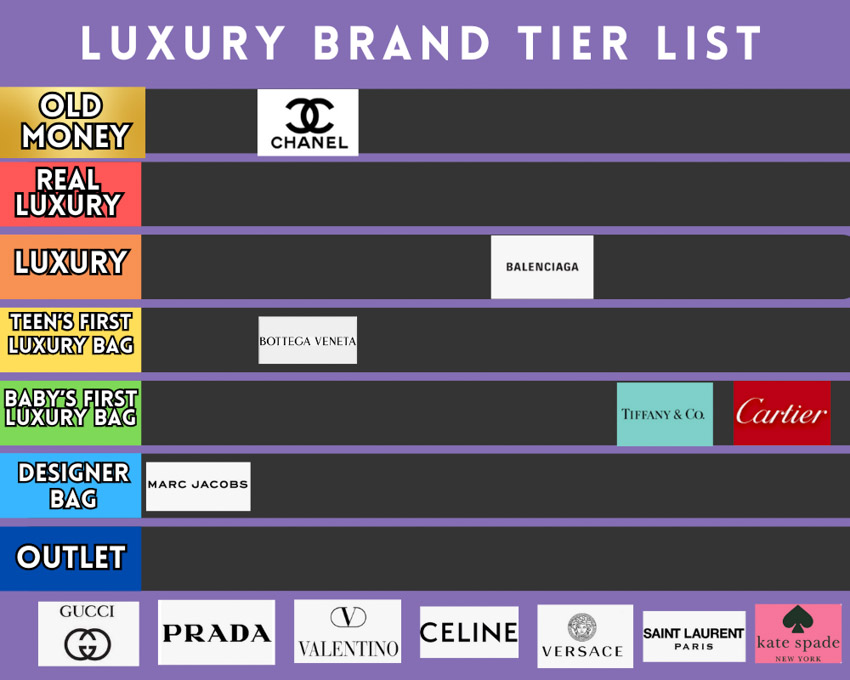
Tier list 2
Kate Spade: F - Tier
A brand easily accessible both in retail and outlet. Their style has persisted but never broke into the tiers of luxury. No regular person would describe them as cheap, but I’d argue the more accessible prices are deliberate. I’m confident Kate Spade never intended to go beyond designer bag level. So in that regard, they are very much a success story, image wise!
Saint Laurent: B - Tier
A brand clawing at the top of the list, if only it were to be judged for its iconic products alone. Saint Laurent used to go by “Yves Saint Laurent” (hence their YSL logo) and through their modernisation efforts elevated their presence with a focus on their gorgeous golden logos and deadly minimalist leather designs. That said, it’s been a while since Saint Laurent held the pedigree they now hold, leaving older lines very affordable on the resale market. A great brand to shop as if they keep up this momentum, older lines will likely ride this success too.
Gucci: A - Tier
Owned by Khering, originating from Italy and the equestrian world, Gucci is the perfect counterpart to Louis Vuitton. Much like a second city such as Barcelona or Bergen, this brand is unapologetically unique, yet somehow appeals to a large audience. Whether it’s the maximalist designs, esoteric messaging or just that they successfully find what the young fashion fans want, it lands them comfortably near the top of the list. Some will argue their lower bar of entry should land them lower, but comparing them to the competition, their lines hold high value second hand, unlike many more expensive brands, where resale value drops rapidly on all except a few favorites.
Celine: C - Tier
Louis Vuittons sister brand, and very much the little sister that drowned in the first child’s shadow. Their older available lines in the somewhat iconic macadam canvas do not hold high value, and there are a lot of macadam out there. The more modern designs have shown growth, using strong, rare, vegetable dye colors on very high quality leather, and borrowing from LV’s luggage experience, creating some truly special pieces.
Valentino: B - Tier
People who like valentino, really like valentino, and rarely stray from the brand. This has helped them maintain high resale value on their bags, despite the lack of notoriety in recent years. Still, looking for deals on their rockstud lines or the eccentric escape tote is not an affordable affair.
They’ve done everything right, and you don’t have the “little extra” without doing a little wrong. If they experiment more, perhaps one day they'll rise on the scale.
Versace: D - Tier
Gianni Versace really did a number on the fashion world with the philosophy of creating fashion so beautiful, onlookers would be petrified as if making contact with the eyes of the gorgon Medusa. It is only fitting that this character from Greek myth became their icon. Many lines from Versace struggle to keep value on their items after release, unless they have the medusa head on them. Good thing they got that Medusa head!
Prada: A - Tier
You don’t hear of many communist party members turning billionaires, but that’s exactly who Miuccia Prada is. She is a female icon in how she helped revolutionize the brand's image after her rather not so feminist dad was out of the business, and took it to the very top of the fashion world. Prada is the only brand in the top of the list that is exclusively family owned, and to keep that momentum from the 80’s till 2023 is why their value remains high.
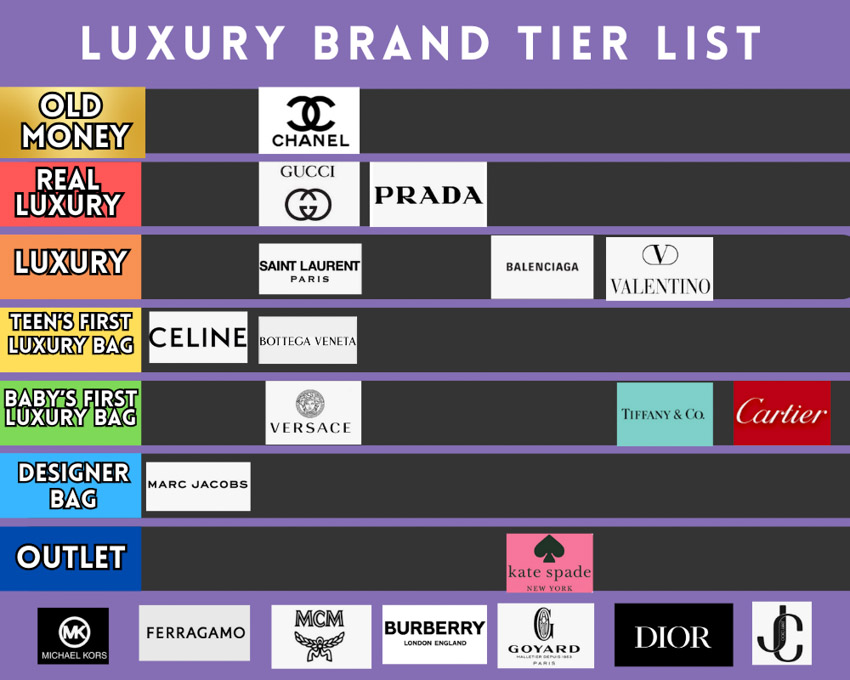
Tier list 3
Mikael Kors: F - Tier
Another designer brand that exists for a target audience with a more modest income. They design beautiful items catering to the mainstream, leading to their second hand prices falling rapidly for new releases. They're owned by Capri holdings, who also own Versace & Jimmy Choo, and are currently undergoing an acquisition by Tapestry, Inc.
Goyard: B - Tier
If you’re a Goyard fan, you were probably looking for them at the top of the list. Goyard followers appreciate the brand's uncompromising focus on craftsmanship, with their hand painted monogram. But with no online store, refusal to succumb to big logos, it falls just short of the top of the list as it lacks the same global and mainstream recognition as true top tier brands. To all you Goyard fans out there; Don’t worry, Goyard will always be S - tier in your heart.
MCM: D - Tier
This german brand became notorious largely thanks to American hip hop artists falling in love with the Vicetos monogram. Other than this, MCM really only have their backpacks as a claim to fame. While their totes and bostons also sell, this is what is truly theirs. Usually this wouldn’t land MCM higher than E - Tier, but what bumps them up is that their backpacks might be the best in the world.
Jimmy Choo: F - Tier
While their items are star studded, the same can not be said for the resale value of Jimmy’s handbags. Being fair, their strength lies in shoes which is what they started with. Like most brands, newer lines hold their value better, but with the amount of cheap options out there, it feels very attainable. One of their most sought after bags is a collaboration with the Anime Character “Sailor Moon” and I can’t help but feel like what makes it attractive is Sailor Moon, not Jimmy.
Dior: A - Tier
Elegance and mysticism incarnate. Dior is an interesting French brand that has increased their value on the resale market significantly the last 5 years. Making strong moves like relaunching their legendary “Lady Dior” bag, with lines adorning the cannage lambskin, has increased value on their older lines like the honeycomb pattern significantly. A while back, they may not have made it on the A list, but here they are.
Burberry: C - Tier
The English house of Fashion has one claim to fame, their novacheck tartan that never seems to go out of style. While this pattern could have landed them much higher on this list, they’ve not really innovated since then, and have struggled to find their identity. They’ve experimented but these experiments resell quite low.
Ferragamo: E - Tier
While best known for their elegant and storied footwear, even having their vara buckle sandals exhibited on the museum of fashion next to queen elisabeth’s wedding dress, you’d might expect them higher on the list. The reality is that Ferragamo has struggled to keep up with trends as their deep roots in Italian craftsmanship was their greatest strength and weakness in one. As recently as 2022 they rebranded to FERRAGAMO with hopes to get a breath of fresh air to their collections. Looking at resale prices for their bags, it seems to have an effect, but time will tell if that effect is sustainable.
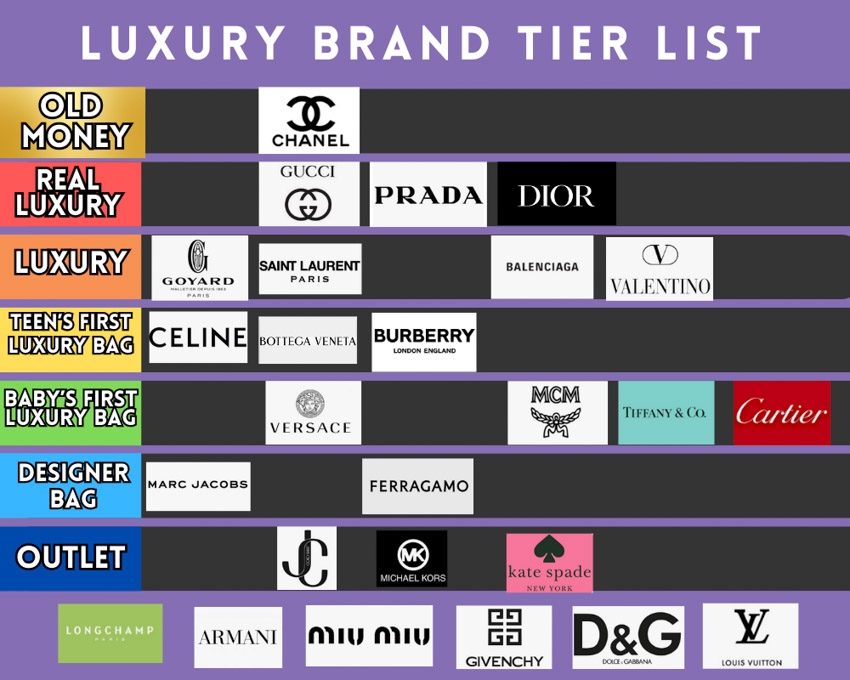
Tier list 4
Armani: E - Tier
Adapting luxury shoes to bags have not panned out as well if you judge by the resale market. Armanis $2000 price tags go under $100 on the resale market, making that price tag less appealing. I’m sure someone buys them retail but with no true iconic designs, they belong on the bottom. The only thing saving them from F - Tier, is that their diffusion lines are doing a better job with the brand image. But if this trend continues, the F - Tier is on the horizon.
Louis Vuitton: A - Tier
If there was a people’s choice award on this list, Louis Vuitton would get it. Not because they’re accessible to the everyday shopper, far from it, but because everyone wants it. All classes, subcultures, genders, nationalities and however other ways you divide people, have groups that love LV. The mix of their luggage heritage creating very practical items, mixed with their French fashion experimentation, puts them in the upper echelon. However, as a people’s choice, it’s not just the elite carrying the Speedy and Neverfull, landing LV just short of top tier.
Longchamp: F - Tier
A brand that feels like a good place for those who enjoy the aesthetic of Hermes but has a long way to go before they can afford it. Longchamp’s bread and butter bag, the “le pliage” has served them well since the 70’s and while they’ve worked hard on diversifying, this one bag style and its many collaborations remain their greatest success. If it only retailed higher, we’d see Longchamp rise on the list. I recommend buying a “Le Pilage” at an airport for a “Jet-set shopping experience” on a budget.
Givenchy: D - Tier
A brand that had a rocket start and has lived on this pedigree since the departure of the founder in the late 80’s. Their iconic anagram logo and core aesthetics of gold and black has lived on, but nowadays it just feels like they're trying to be Balenciaga. Still, certain items retain value, landing them in the D - Tier.
D&G: B - Tier
Dolce & Gabbana is one of the younger brands on this list, and wouldn't really make waves until their third and fourth lines. But the brand was lined up for success when the 2000’s rolled around, as their designs would fit the spirit of the time. While their diffusion line dipped into the D and F - Tiers, the main brand remained solid long enough to hit a low B - Tier.
Miumiu: D - Tier
Prada’s sister brand is named after Miuccia Prada’s childhood nickname. It’s about how a child is treated differently to an adult, that this brand is being managed. They certainly have their wins with some lines making waves on occasion, but overall Miumiu feels more like a Prada diffusion line. Considering how Miumiu’s less memorable lines have not affected the sister brand, perhaps it was smart to have a brand where they can play out their childhood fantasies.
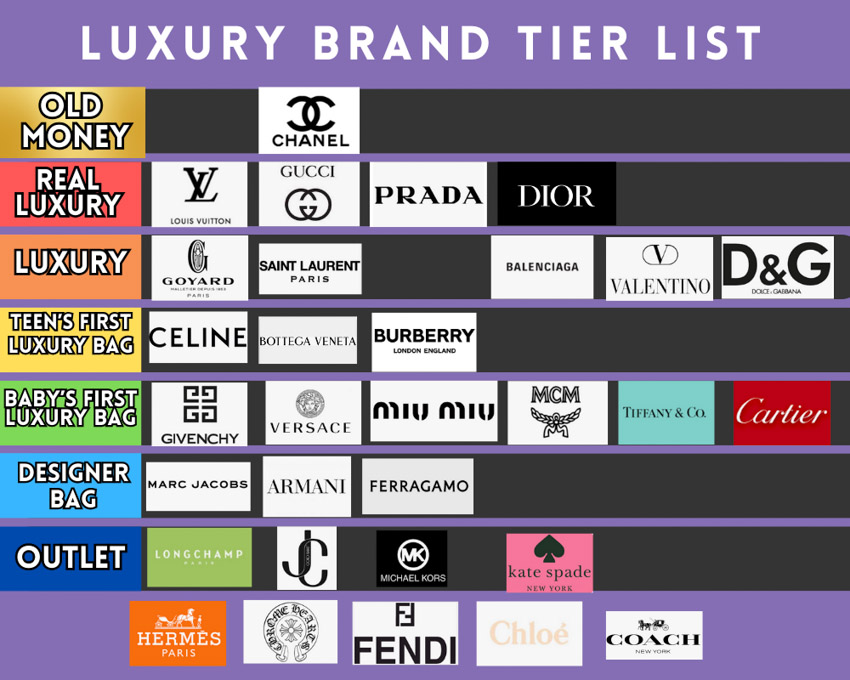
Tier list 5
Hermes: S - Tier
An equestrian brand, one of the oldest luxury brands still around. Hermes served noblemen and royalty from the very beginning in the 1800’s, and only had a dip in popularity when they got tempted to adapt synthetic cheap materials over their expensive leathers in the 70’s.
But Hermes learned from this mistake, took back the reputation of the best leather in the world, learned to use their storied pedigree with the Kelly & Birkin Bags and have never looked back since. With the most expensive retail bag available being from Hermes, one which you must be invited to purchase, there’s no other place for them than the top of the list.
Chloe: C - Tier
Chloe has gone through a similar transformation as Celine. Many of their older lines held great historical value, a great example being their 00’s Padington handbag, but they took too long to rekindle the fire, which they now have with newer lines. This late return to fame has made it clear that the paddington, while iconic, was a trend. Perhaps one day, it’ll be retro, but until then, Chloe is on the edge of C - Tier, on the threshold to D.
Fendi: B - Tier
Modern Fendi feels like Karl Lagerfelts retirement project in the best and the worst ways. On one hand, he took the brand to new heights with unconventional designs and creativity he’d never be able to pull at a more conservative brand like Chanel. But with age, his ideas while still unconventional became perhaps a bit too unique. However, his last big success for Fendi was the 2013 Monster line that took the world by storm especially in 2016 with that unforgettable backpack. Thanks to it, and some recent wins, it lands them in the B - Tier.
Chrome hearts: A - Tier
When you are privately owned, based in Hollywood and your clientele largely consists of celebrities, you are going to see success like Chrome Hearts. They’re best known for their silver and artistic takes on everything from sweatshirts to dinosaurs. You can only buy their goods on location, thus the resale value is very high. But, lacking any real iconicness except from logos in the bag department, puts them in the bottom A - Tier.
Coach: F - Tier
A brand that has so many filler bags that many of the big luxury websites don’t even stock them anymore, as they’re rarely profitable for resale. While Coach is a successful American business story, with headquarters in Manhattan 6th avenue, this is a brand most people can build a second hand collection off, with one paycheck.
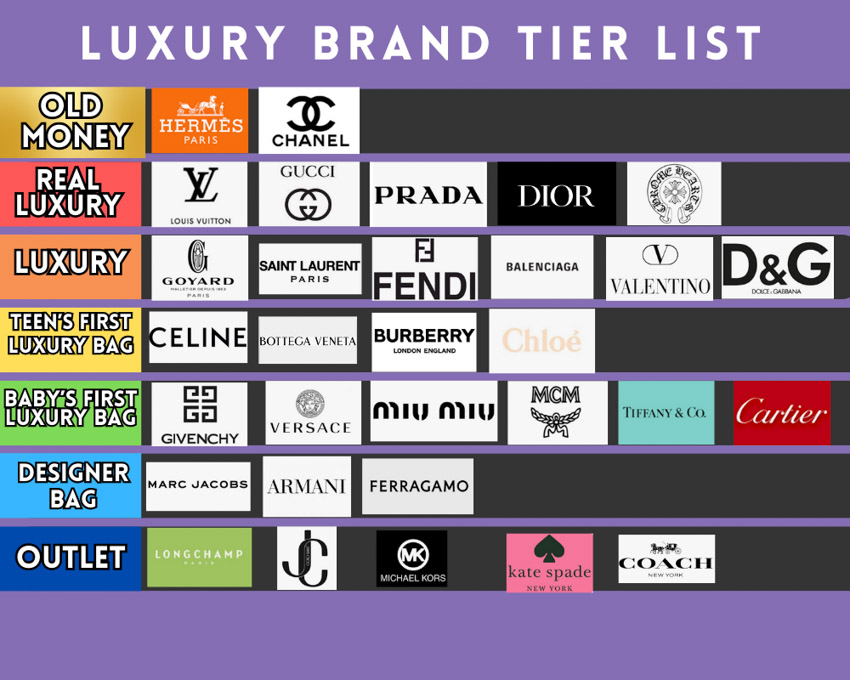
Tier list complete
This list is of course individual and biased by personal perceptions. After all, these brands all do their best to market and sell the idea of their brands, with varying success. You quickly see through the veil if you look up retail prices vs second hand prices.
But perception isn’t everything. Versace, is in a comfortable spot on this list, yet their owners are being acquired by the owners of Coach & Kate Spade, two of the lowest ranked brands on this list. Tapestry.inc's focus on a younger audience who seeks status, as well as their outlet efforts have clearly paid off, allowing them to expand the portfolio with the legacy of this Italian brand.

Conclusion
In the end, a bags real value is the value you put into it yourself. We all seek belonging and many find it in their self expression and achievements. No matter how rich you are, we’re all humans, and we need things to strive for lest we go crazy. The more hard earned the journey is, the better the memories, and the more personal the journey to get an item becomes. For many, their luxury items are their achievements in physical form, and thus, second hand is the transfer of one person's dreams to another.
About The Writer
Magnus Paslawski has three years of professional experience as a re-seller and auctioneer of luxury goods. He currently does marketing for ZenPop.jp but is always up to date on the designer world.

